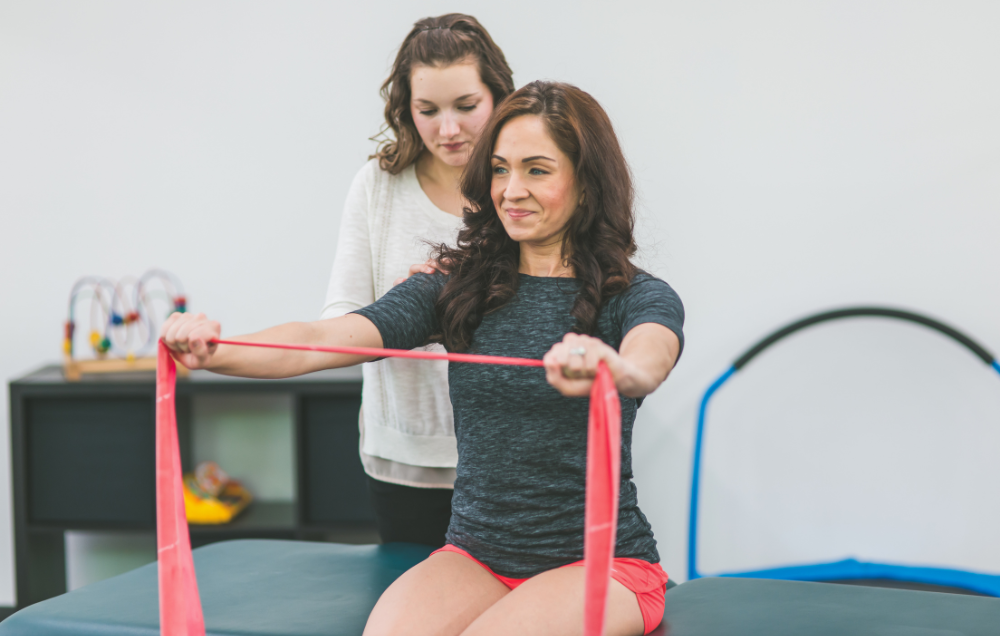Contents
So, you’ll soon be starting physical therapy to treat your condition, whatever it may be. If you’ve never been to physical therapy before, it may be difficult to figure out what exactly you should wear. Your physical therapist won’t care whether or not you’re wearing the latest fashion, but they will appreciate it if you choose clothing that is appropriate for your sessions. Are you not really sure what appropriate PT clothing is? Take a look at the sections provided below to learn more about what kind of clothes you should wear and what kind of clothes you should avoid for each session.
What kind of clothing should you be sure to wear to your physical therapy sessions?
There is a certain type of clothing that is preferred during physical therapy sessions. It’s generally recommended that you choose loose clothing that allows you to move comfortably as well as provides access to the area you’re receiving treatment for. For example:
- A loose T-shirt.
- Loose gym shorts or elastic pants.
- Sneakers or tennis shoes.
Whatever clothes you choose to wear to your physical therapy sessions is ultimately up to you; however, it’s important to keep in mind that your physical therapist will likely need to have visual or physical access to the area you are receiving treatment for. For example, if you are receiving treatment for an elbow injury you probably should not wear a long-sleeved shirt to physical therapy. If you are receiving treatment for a neck injury, like whiplash, it’s not a great idea to wear a hoodie or a turtleneck.
What kinds of clothing should you be sure NOT to wear to your PT sessions?
You’ll want to dress like you’re going for a workout because you’ll be doing a variety of exercises and movements during each session. You should stay away from clothes that you wouldn’t feel comfortable sweating in and that might restrict your movement. Need some more specific examples? Here are some things NOT to wear to physical therapy:
- Long-sleeved, tight shirts.
- Long, tight pants.
- Open-toed shoes.
The kind of clothes you’ll want to avoid during your PT sessions are anything that could restrict your physical therapist’s access during treatment. For example, if you are going to PT for an ankle injury, you should not wear knee-high boots. If you’re going for treatment for a problem with your knee, wearing tight jeans is definitely a no-go. The point is to allow for movement during each appointment and for your therapist to see any physically apparent issues or improvements you may be experiencing. This way, you can get the most out of each session.
Let Lattimore PT help you get the right physical therapy care whatever your condition may be
Lattimore Physical Therapy & Sports Rehabilitation Network first got its start in 1992. John and Cindy Shuman, husband and wife, first launched their own physical therapy practice with the aim to improve the quality of life of each member of their community. Since 1992, Lattimore PT has opened nearly 30 locations across New York.
Our team of talented physical therapists across the state is dedicated to understanding the best treatment for you. We specialize in taking a “hands-on,” interactive approach with each of our patients to provide them with the best care possible. We love to see our patients thrive, which is why we’ll do as much as we can to help get them to that point. The physical therapists at each of our Lattimore locations take pride in their work and do their best to come to the clinic each day with a smiling face. We aim to make each physical therapy session enjoyable yet productive. The ultimate mark of success, to us, is a patient who feels positively impacted by our work. Are you ready to experience “the Lattimore way”?
Helping you manage your condition is important to us. We feel strongly about providing our patients with the best possible care so that their quality of life can improve. If you’re dealing with a condition that is affecting your everyday activities, we suggest that you schedule an initial appointment with us. If you have already scheduled an appointment with us and you’re hoping to be prepared for your first session, read about what you need to know about PT. If you still have questions, don’t hesitate to give us a call.
Contact our team today for more information or to schedule an initial appointment.


